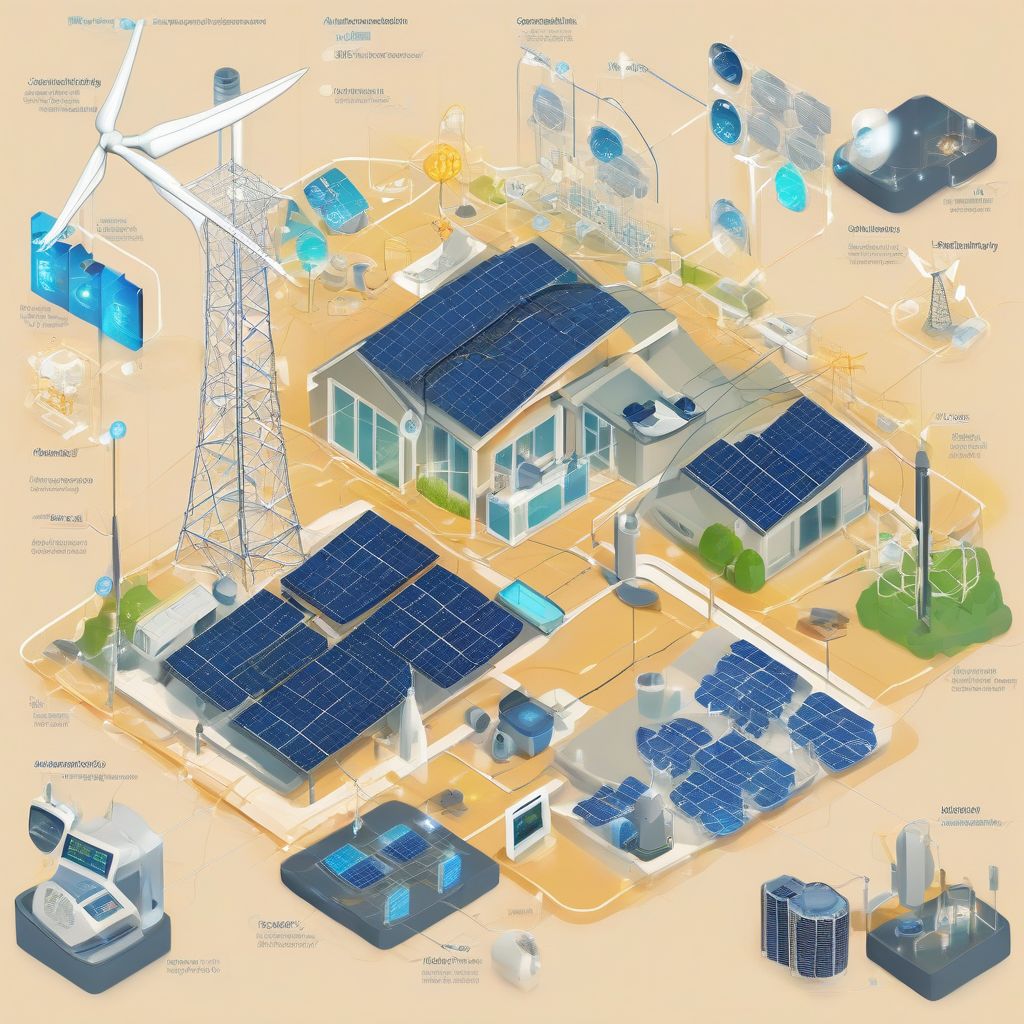Imagine a power outage hitting your city during a sweltering summer day. Air conditioners sputter to a stop, refrigerators hum their last, and life as you know it grinds to a halt. Now, imagine a different scenario: the power flickers, but within moments, the grid automatically reroutes energy, minimizing disruption and keeping essential services running. This is the promise of the smart grid – a modernized electricity network that uses digital technology to improve the efficiency, reliability, and sustainability of energy distribution.
Understanding the Benefits of Smart Grids
Smart grids represent a significant leap forward from traditional power systems. They offer a myriad of advantages, impacting everything from our daily lives to the health of the planet. Here’s a breakdown of how smart grids improve energy distribution:
Enhanced Reliability and Resilience
Traditional grids are susceptible to cascading failures. A problem in one area can quickly spread, leading to widespread blackouts. Smart grids, however, are designed with redundancy and self-healing capabilities. Sensors and automated switches can detect and isolate faults, rerouting power around affected areas and preventing large-scale outages. This improved resilience is particularly crucial in the face of extreme weather events, which are becoming increasingly common.
Improved Efficiency and Reduced Waste
Smart grids minimize energy loss during transmission and distribution. By using real-time data and advanced analytics, these grids can optimize energy flow, reducing the amount of electricity wasted as heat. This increased efficiency translates to lower operating costs for utilities and potentially lower electricity bills for consumers.
Integration of Renewable Energy Sources
One of the most significant benefits of smart grids is their ability to seamlessly integrate renewable energy sources like solar and wind power. These intermittent sources pose challenges for traditional grids, but smart grids can manage the fluctuating supply by intelligently balancing it with other sources and using energy storage systems. This capability is essential for transitioning to a cleaner, more sustainable energy future.
Empowering Consumers with Greater Control
Smart grids equip consumers with more information and control over their energy usage. Smart meters provide detailed data on electricity consumption, allowing individuals to track their usage patterns and identify areas for conservation. This increased awareness can lead to more responsible energy use and potentially lower electricity bills. Some smart grids even allow consumers to participate in demand response programs, where they can receive incentives for reducing their energy consumption during peak demand periods.
 Smart Grid Illustration
Smart Grid Illustration
How Smart Grids Work: A Deeper Dive
The magic of smart grids lies in their sophisticated network of interconnected technologies. These include:
Smart Meters
These digital meters replace traditional analog meters, providing two-way communication between the utility and the consumer. They track energy consumption in real-time and transmit this data back to the utility.
Sensors and Monitoring Devices
Sensors placed throughout the grid collect data on voltage, current, and other parameters. This information allows the grid to identify potential problems and optimize energy flow.
Advanced Analytics and Control Systems
Sophisticated software analyzes the data collected by sensors and smart meters, making real-time adjustments to the grid to ensure optimal performance and prevent outages.
Communication Networks
Robust communication networks connect all the components of the smart grid, enabling the seamless flow of data and control signals.
Addressing Common Concerns about Smart Grids
While the benefits of smart grids are undeniable, there are also some concerns that need to be addressed:
Cybersecurity
As with any interconnected system, smart grids are vulnerable to cyberattacks. Protecting these grids from malicious actors is crucial to ensure the reliability and security of the energy supply.
Privacy Concerns
The data collected by smart meters can raise privacy concerns. Utilities need to implement strong data protection measures to safeguard consumer information.
Cost of Implementation
Deploying smart grid technology requires significant investment. However, the long-term benefits of improved efficiency, reliability, and sustainability often outweigh the initial costs.
The Future of Energy Distribution
Smart grids are not just a futuristic concept; they are being implemented around the world. As technology continues to advance, these grids will become even more sophisticated, further enhancing the efficiency, reliability, and sustainability of our energy systems. The transition to smart grids is a crucial step towards a cleaner, more resilient energy future.
Conclusion
Smart grids represent a paradigm shift in how we generate, distribute, and consume energy. Their ability to improve reliability, efficiency, and integrate renewable energy sources is transforming the energy landscape. While challenges remain, the benefits of smart grids are undeniable. By embracing this technology, we can pave the way for a more sustainable and resilient energy future for generations to come. What are your thoughts on the role of smart grids in shaping our energy future? Share your comments below and let’s continue the conversation. Explore our website for more articles on sustainable energy solutions.



